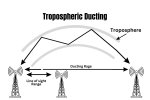Today I decided to test the limits of my Air 3S by seeing how far I could fly to N,E, S and W.
In short, I was surprised to see that if I flew in a North/Northeasterly direction I was able to fly well over one mile away before my signal strength dropped down to 4 bars. I didn't push it further after that and brought it back home at that point.
For all the other compass points, I've barely been able to go more than 3/4 of a mile from my home point before the signal strength indicator turns orange ( it will literally go from full strength to orange in those directions ).
I find this rather odd for the main reason that there are no significant changes to the topography in any of those directions, at the most there is maybe a 50 change in elevation at the most.
to the west, I can sort of understand losing signal quickly because there are some fairly thick stands of timber in that direction, but thats it, no buildings or other significant structures of any type are present there or elsewhere in this area.
All flights were conducted over fields and woodlands so no people or structures were put in danger because of my actions.
There was no treadmill involved in this test, and the only explanation I have is that there is a magnet in the drone and it is being pulled to the north by magnetism.
In short, I was surprised to see that if I flew in a North/Northeasterly direction I was able to fly well over one mile away before my signal strength dropped down to 4 bars. I didn't push it further after that and brought it back home at that point.
For all the other compass points, I've barely been able to go more than 3/4 of a mile from my home point before the signal strength indicator turns orange ( it will literally go from full strength to orange in those directions ).
I find this rather odd for the main reason that there are no significant changes to the topography in any of those directions, at the most there is maybe a 50 change in elevation at the most.
to the west, I can sort of understand losing signal quickly because there are some fairly thick stands of timber in that direction, but thats it, no buildings or other significant structures of any type are present there or elsewhere in this area.
All flights were conducted over fields and woodlands so no people or structures were put in danger because of my actions.
There was no treadmill involved in this test, and the only explanation I have is that there is a magnet in the drone and it is being pulled to the north by magnetism.
Last edited:












